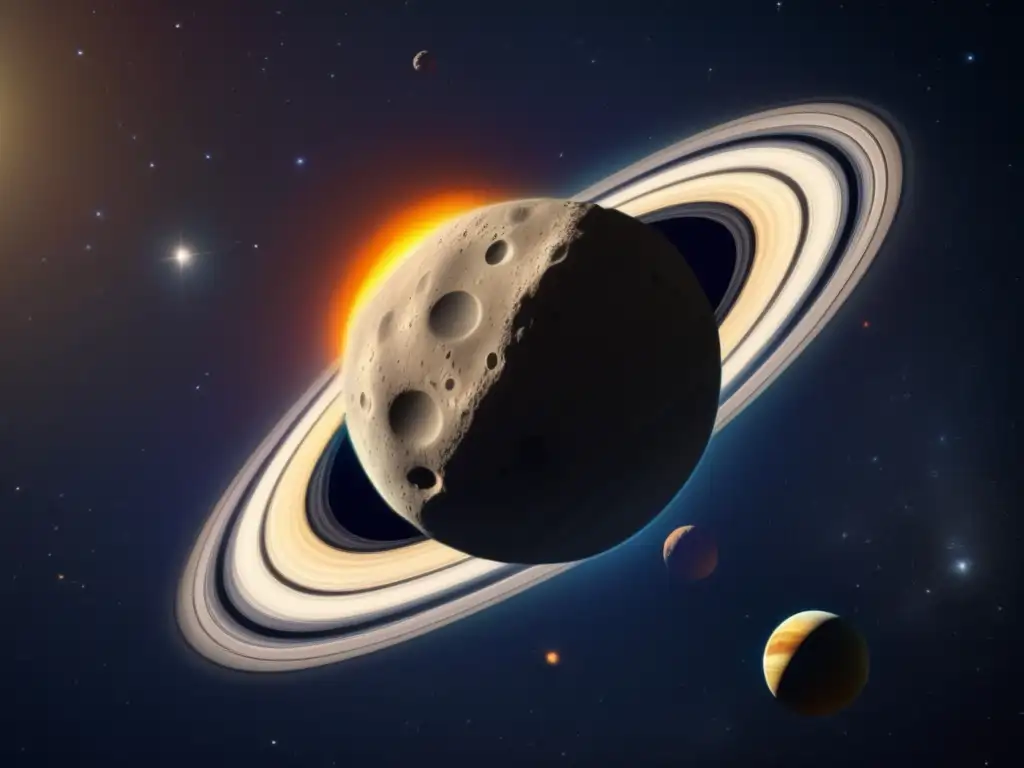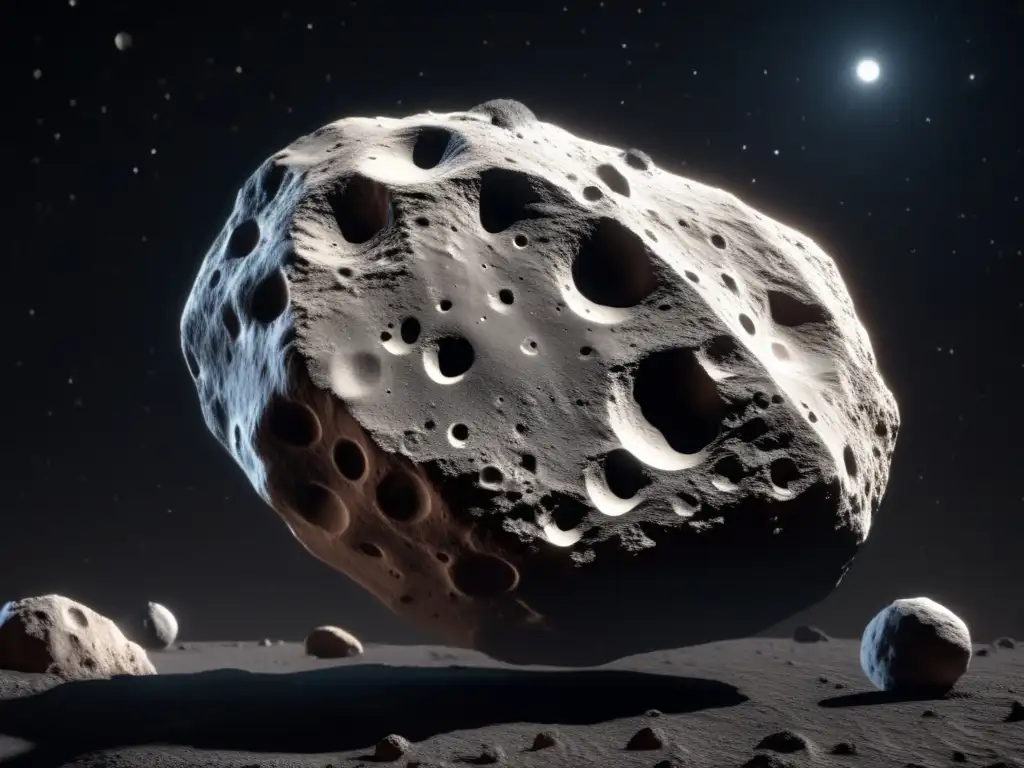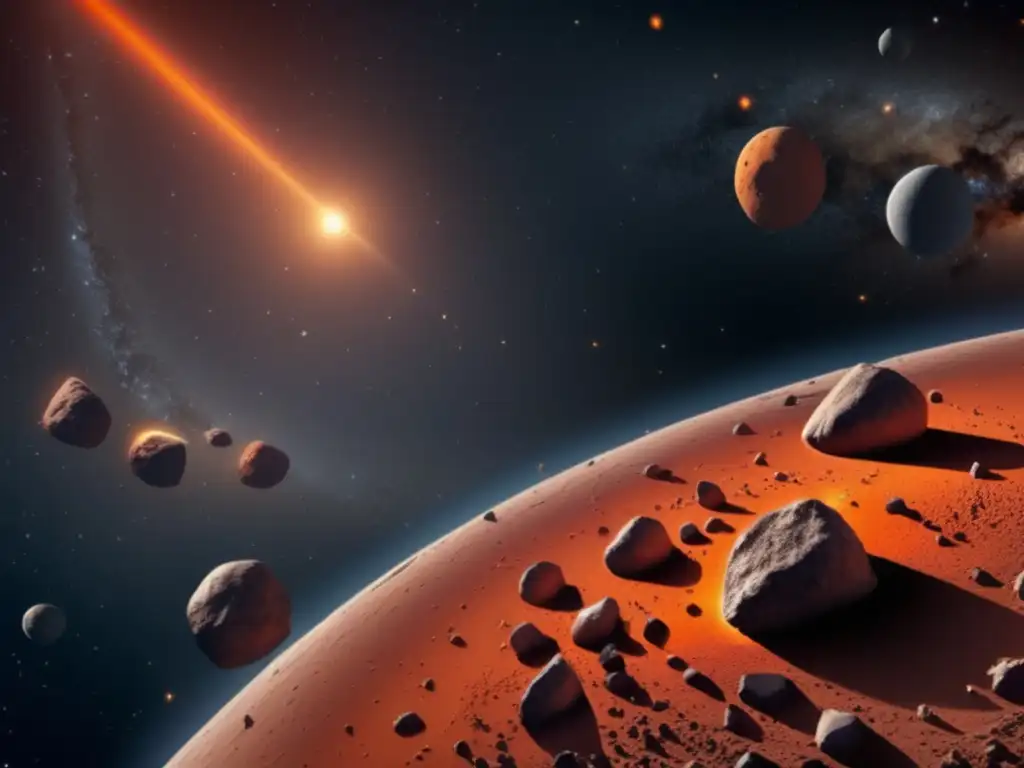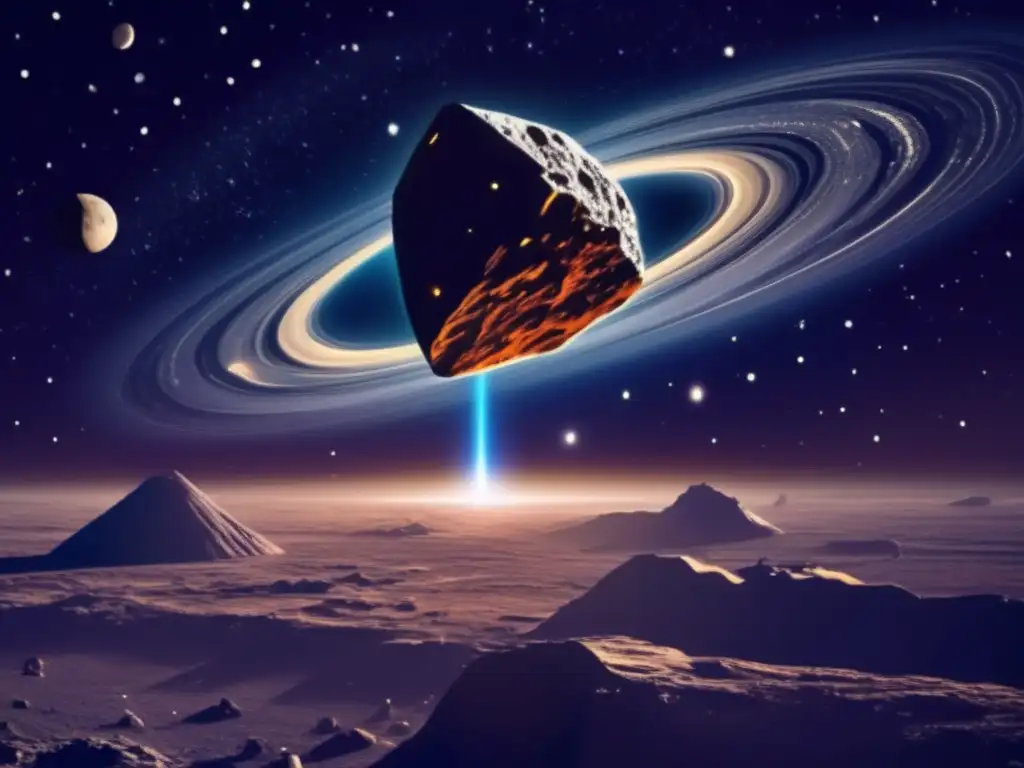A Closer Look At Asteroid Leucus

Introduction
Welcome to Asteroid Realm, where we explore the fascinating world of asteroids. In this article, we will take a closer look at asteroid Leucus and uncover its unique characteristics and significance. The study of asteroids provides valuable insights into the formation of our solar system and offers clues about the origins of life on Earth.
Asteroid Classification

Trojan Asteroid
Asteroid Leucus belongs to the Trojan group, which are asteroids that share the same orbit as a larger planet, either ahead or behind it. Leucus is specifically classified as a Trojan asteroid of Jupiter, meaning it follows Jupiter in its orbit around the Sun.
Physical Characteristics
Leucus has an estimated diameter of 100 kilometers and is composed mainly of rocky materials and metal. Its surface is thought to be covered in craters, evidence of its long history in space. The asteroid's composition and structure provide valuable information about the early stages of our solar system.
Orbital Dynamics
The orbit of asteroid Leucus is stable and lies approximately 5.2 astronomical units (AU) from the Sun, placing it within the asteroid belt. It travels in an elliptical orbit and takes about 11.6 years to complete one revolution around the Sun.
Origin and Discovery

Named after the Greek Mythology Figure
Asteroid Leucus is named after Leucus, a character from Greek mythology who fought in the Trojan War. The name was chosen in line with the tradition of naming Trojan asteroids after figures from the Trojan War.
Discovery
Asteroid Leucus was discovered on February 28, 1977, by astronomers Charles Kowal and Stephen Singer at the Palomar Observatory in California. Its discovery provided further evidence of the existence of Trojans, a group of asteroids sharing Jupiter's orbit.
Significance in Astronomy
The discovery of asteroid Leucus, along with other Trojans, has allowed astronomers to study the dynamics and stability of the Trojan population. These asteroids provide valuable insights into the formation and evolution of our solar system.
Asteroid Impact Hazard

Potential Threat
As an asteroid of significant size, Leucus has the potential to cause substantial damage if it were to collide with Earth. However, the chances of such an impact occurring are extremely low, as Leucus follows a stable orbit and its path does not intersect with Earth's trajectory.
Mitigation Strategies
Despite the low probability of an impact, scientists continue to monitor Leucus and other potentially hazardous asteroids. Advanced telescopes and tracking systems allow us to detect and track their trajectories with great precision. In the event of an imminent threat, various mitigation strategies, such as deflection missions, are being studied to safeguard our planet.
Role in Planetary Defense
Studying asteroids like Leucus is crucial for developing strategies to defend our planet against potential impacts. By understanding their composition, structure, and orbital dynamics, scientists can refine models and simulations to better predict the behavior of near-Earth objects.
Frequently Asked Questions

-
Is asteroid Leucus a threat to Earth?
No, the orbit of asteroid Leucus is stable and does not pose a threat of colliding with Earth.
-
What is asteroid Leucus made of?
Asteroid Leucus is primarily composed of rocky materials and metal.
-
How was asteroid Leucus discovered?
Astronomers Charles Kowal and Stephen Singer discovered asteroid Leucus on February 28, 1977, using the Palomar Observatory in California.
-
What is the significance of Trojan asteroids?
Trojan asteroids, including Leucus, offer valuable insights into the formation and evolution of our solar system.
-
What is being done to mitigate asteroid impact hazards?
Scientists are monitoring potentially hazardous asteroids and developing strategies for planetary defense, including deflection missions.
Conclusion
Asteroid Leucus provides us with a fascinating glimpse into the history and dynamics of our solar system. Its classification as a Trojan asteroid and its composition contribute to our understanding of the early stages of planetary formation. While Leucus poses no immediate threat to Earth, it reminds us of the importance of monitoring and studying asteroids to ensure the long-term safety of our planet. We invite you to explore more articles on Asteroid Realm and engage with our community by sharing your thoughts and insights.
Additional Resources

For further reading about asteroids and their significance, please visit the following resources:
- NASA's Asteroid and Comet Watch
- International Astronomical Union - Earth Impacts
- NASA's Near-Earth Object Program
 Asteroid Eurybates: A Tale Of Discovery
Asteroid Eurybates: A Tale Of Discovery The Unique Characteristics Of Asteroid Arisbe
The Unique Characteristics Of Asteroid Arisbe Discovering The Secrets Of Asteroid Aeneas
Discovering The Secrets Of Asteroid AeneasIf you want to discover more articles similar to A Closer Look At Asteroid Leucus, you can visit the Asteroid Profiles category.
Leave a Reply

Articulos relacionados: